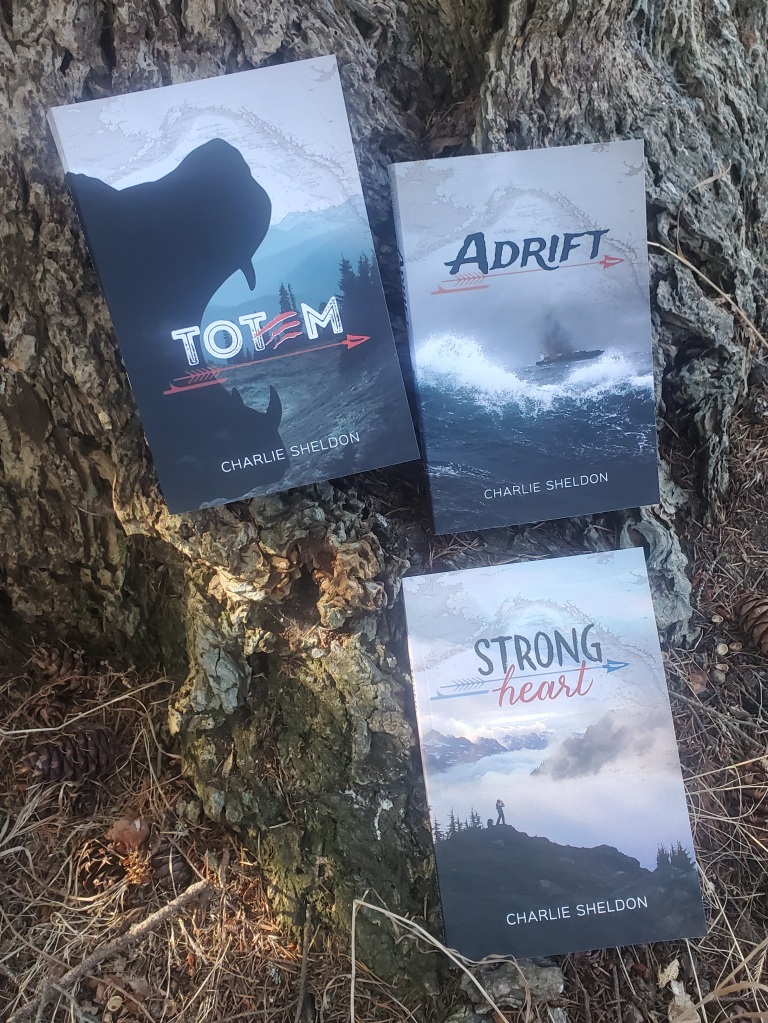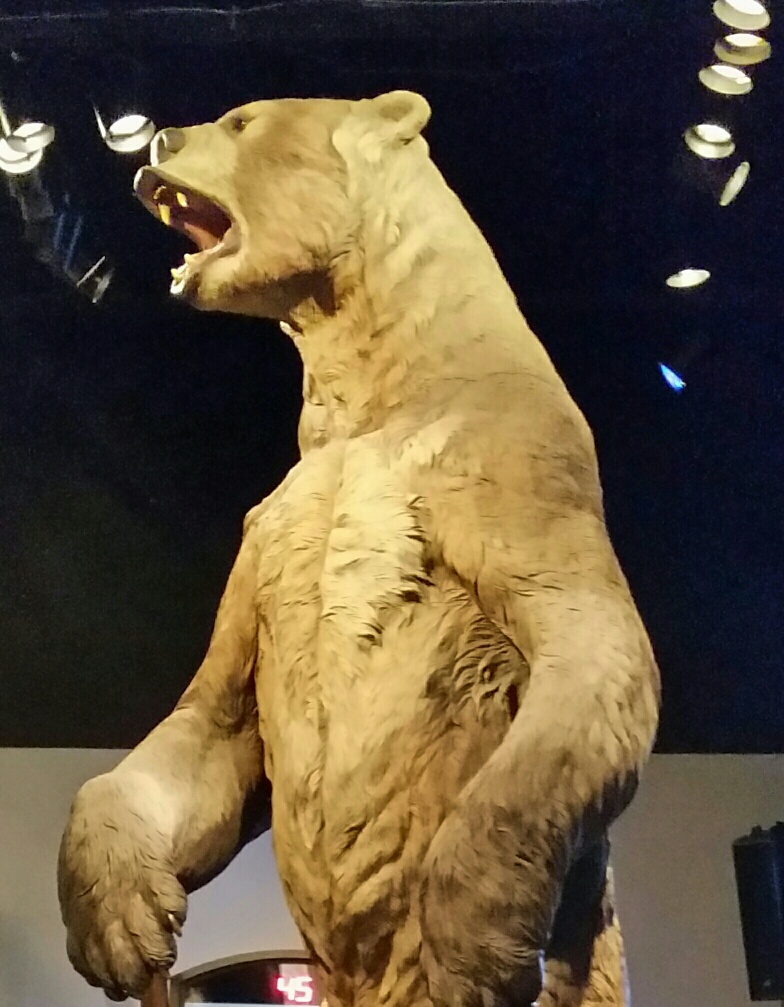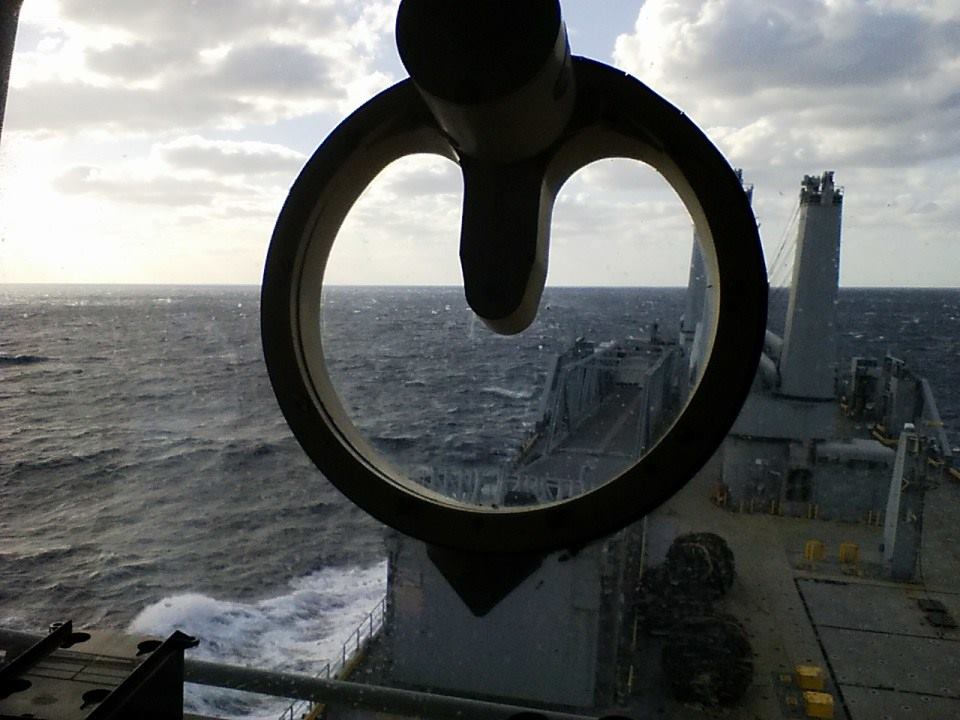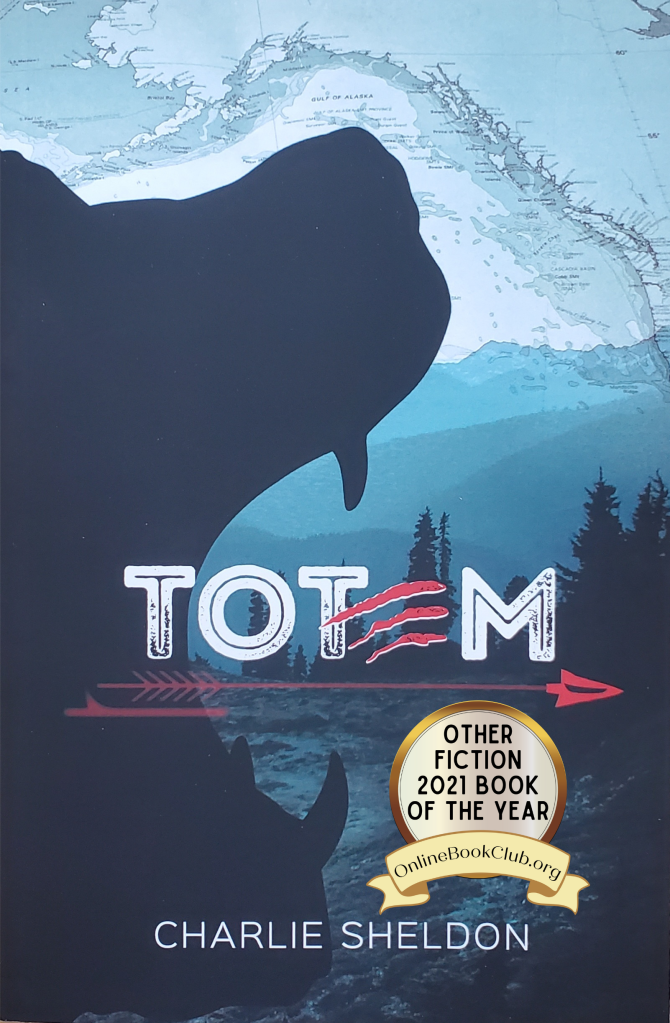
The Strong Heart Series

Three books, stand-alone, one grand story….wilderness, adventure, coming of age, great animals, ancient legends….Scroll down for reviews and reactions….available everywhere books are sold….Available from Ingram Content Group
Set on Washington State’s Olympic Peninsula and along the British Columbia coast, these tales follow an ornery young girl as she finds her power in an impossible way.
Strong Heart: One early summer Sarah Cooley, 14, orphaned, lands on the doorstep of a grandfather unaware he has a granddaughter, just as he and his friends are about to head into the wilderness. They decide to take her along to teach her a lesson. All too soon they discover she may be taking them….
Adrift: The following December, in the Gulf of Alaska, the container ship Seattle Express catches fire, forcing the crew to take to the lifeboats. One lifeboat crashes ashore against Haida Gwaii, remote islands in the Gulf of Alaska. A down and out salvage company races to seize the drifting ship. While the marooned sailors struggle to survive, relatives back on the Olympic Peninsula hatch a desperate rescue plan…..
Totem: That spring, Sarah and her companions want to return to Bear Valley in Olympic National Park before Buckhorn Corporation starts mining there, to see it one last time. At the same time, strange elk kills start appearing around the park and then deep in the interior. Sarah’s companions experience dreams or visions of an ancient past that somehow reflect their present reality just as impossible animals appear. Everything comes to a head in Bear Valley…..
Becoming lost in the woods….
Have you ever been lost in the woods? These days most of us, when we become lost, are more likely than not wandering an airport or big public parking garage looking for our vehicle. Right?
I’ve never been really lost out there. There are stages of lost-ness, I think. There is the “lost the trail” lost, which means wandering off a trail without realizing and then trying to find one’s way back. This is how most people get truly lost, this way, I think. I met a guy in my writing class in 2013 who went into the Olympics and started up the Three Lakes Trail toward Skyline ridge in the southwest Olympics, off the Quinault, and somehow missed a turn and ended up lost for five days. He got out OK, chilled, but that’s a long time to be missing. So he went from “lost the trail” to being really lost, but of course knowing the general area he was in. Then there is the totally lost condition, not even knowing the general area, this coming when say a plane crashes in the wilderness somewhere and you survive.
But, three times, I wandered off trail and was for a time “lost.” I wasn’t lost for long the first time. I was hiking up to Dodger Point and, low down, the trail jogs sharp left and up to start up the ridge after crossing the Elwha (I think that’s where it was, it was 25 years ago) and I kept going ahead, on the open forest floor, until say thirty yards in I realized I wasn’t on the trail any more. That was startling. An interesting thing happens to you when you lose a trail, or to me, anyway. Everything shifts. That first time I backtracked and sure enough found the jog right away.
The second time I was lost could have been more serious. I was alone, up on the Skyline Trail, July Fourth weekend a year with little snow, absolutely alone, my second day in, way up high past Kimta Peak, the next pass, maybe Hee Haw Pass? Anyway its rocky and bare up there, cairns, but enough snow to cover the cairns, and the trail there wanders down this rocky defile a ways then also jogs left over a little deep creek, but the ground is open and well trod and so I missed that jog and wandered this way, then that, and always the trail petered out. I am way in, it has just started to rain, and it then rained for three days, never been up there before, and now cannot find where the trail goes. That time it took me a half hour to find the jog and the trail. I knew enough to know that when you lose the trail you backtrack, first, and second you don’t go wandering off without a real clear idea of how to get back, because it’s rough country up there and if you get off far enough, down say a steep side hill, then you can get turned around and then you are lost, like my classmate got lost.
The third time is embarrassing. I had a new pair of boots, and hoped they were broken in. I had walked in them and gone up and down gravel sidehills with them, but they were new and I knew they were not yet ready, but it was a nice day, sunny, dead clear, I had the day off, and the Brothers beckoned, so I drove to the trailhead to Lena Lake, was on the trail by 6am, and tried to climb the Brothers. This, like the two events above, was the first or second year I was out here, maybe 30 years ago. I was younger than now and felt strong and was really stupid because right away I knew the boots weren’t ready but, dammit, the day was FINE, so on I went. The climber’s path to some campsites in the Valley of Silent Men is pretty easy to follow, and then you get above trees and I climbed up and up and up, in the hot sun, feet starting to burn, now, but dammit I was close! I reached the final summit block, where it gets a little exposed, and by now I know my feet are gonna be a big problem. I turned around maybe 200 feet below the summit and worked my way down to the campsites off the rock, which took a damn long time, several hours, and when I got down there I got all turned around. I stopped and thought, I should take my boots off, but knew if I did I’d never get them on again. But somehow I got turned around and could not find the path down to Lena Lake. This took me two hours, wandering and looking. I was in a lot of pain and feeling stupid and not too rational, probably seriously dehydrated, nobody else around all day, afraid to remove my boots. That time, for a half hour, I was afraid I was really lost, wandering the woods, maybe getting further and further from the trail, and that was scary and sobering. I stopped and sat and took some breaths and relaxed, drank water, and checked the sun, the slopes, and found the trail.
I got back to my car at 7pm, 6000 vertical feet up and 6000 vertical feet down later, and when I took off those boots the skin on my feet up to my ankles came off too.
This was the first of several embarrassing boot stories, but (hopefully) the last of my lost stories, all of which were many years ago. But, still, that shift, that change, when you realize you don’t know where you are – that gets your attention.
The platform I’d like to see…..

Term limits for Congress people – 5 terms for Senate, 15 for the House (30 years):
Anyone in Congress must put all stocks in a blind trust and nobody in Congress, or immediate family members, can buy or sell stocks while in office;
Anyone serving in Congress cannot work as a lobbyist for 10 years after leaving office;
Corporations are no longer “people” and corporate money contributions to elections prohibited – individual contributions only, limited per donor, PACS forbidden;
Election Day becomes a Federal Holiday;
People are registered to vote at birth, when they receive their Social Security number, and automatically enrolled when they reach the age of 18
Electronic voting machines are removed and all ballots are paper and counted by hand;
There is a universal two year National Service requirement for all citizens, either military or equivalent work (such as aides in mental hospitals, conservation projects, assisting in schools) with everyone subject to military draft as one of the service components;
For the next 5 or 10 years virtually prohibit immigration except for those fleeing desperate conditions such that US residents or national service workers will fill available openings while at the same time increasing the Federal minimum wage to, first, $ 15 an hour and in 10 years at least $ 20 an hour
Create as much manufacturing domestically as possible using aggressive “buy American” standards on conditions favorable for workers to organize or establish worker-owned enterprises;
Return to the graduated tax structure as under Eisenhower in the late 1950s – According to records compiled by the Tax Foundation, a single person making $16,000 in 1955 — that’s $178,000 in today’s dollars — had a marginal tax rate of 50%; compensation of $50,000 ($559,000 today) moved you into the 75% tax bracket; and an income of $200,000 ($2.3 million today) put you in the 91% tax bracket. (Jan 30, 2019 figures adjusted by 19 percent inflation since then to today);
Remove Social Security taxation income limits;
Reduce military spending and establish Medicare for all for everyone in the United States;
Tax any religious organization that engages in politics;
Carry Federal judicial ethics standards to all US Federal courts including rhe Supreme Court;
Properly fund the IRS to adequately collect entitled tax revenues;
Return civics courses to all public schools;
Embark on national program to develop safe and sustainable hydrogen energy systems as a way to maintain our energy-intense modern society with the most abundant fuel source we have;
Close nearly every overseas U.S. military base;
Apply existing anti-trust and regulatory rules to maintain competition and avoid monopoly capture;
Re-establish affirmative action fir those groups suffering systematic racism and re-establish through legislation Roe v Wade conditions.
Some further thoughts:
Public school tax receipts limited to public schools, not charter schools;
Only those who can pass the citizen test immigrants must pass to become US citizens are allowed to vote in US elections; ie voters should study and take the test, too;
Establish tight control of AI development similar to that now used to oversee and control nuclear development;
A need to establish and implement a decades-long program to repair and maintain dams, piping systems, water infrastructure, forest fire safety, water supplies, possibly using national service workers, among others;
In all cases work to establish an economic system based on sustainability, re-use, minimal resource extraction, and assurance that tail-end impacts of actions are the responsibility of those taking those actions.
Going both ways across the Land Bridge
Further evidence – ancient seafaring

Check out this article arguing that ancient humans reached some islands in the Mediterranean sea as long ago as 450,000 years, by boat, not on foot. If this is true, those humans were not modern homo sapiens but homo erectus, suggesting that hominids became capable sailors hundreds of thousands of years ago. If this is true (and I believe it is) then all theories about human migration need to fully explore the notion humans sailed the coast and among islands, out of sight of land, just as often, if not more often, than undertaking long journeys over land. This makes sense, if you think about it, because during these times there were many periods when great ice sheets covered the land, not to mention all the enormous meat eating predators who were, then, the apex predators – short face bear, dire wolf, cats…..
https://www.sciencedirect.com/science/article/abs/pii/S1040618222002774
A Tale from the Heart – Goodreads Review TOTEM
Back in the day….
Grab a cup of coffee and watch this, a film about the last of the Cape Horn sailing ships during the 1920s-1940s. Talk about hard work, danger, risk…..
Summers end….

The thing about having a little blog is it must be fed. When the summer comes out here, and the skies brighten and the rain stops, the trails and forest beckon. There are trails to revisit, or visit the first time, or areas off trail asking for attention, distant lakes to discover and reach, remote forest roads leading nowhere beyond which lies….? Of course, when you reach a certain age, and I fear – no, I am certain – I have reached it, you need to prepare for such excursions. Train. Walk miles, find nearby trails and hills to conquer, load a pack and climb stairs, or just walk, and walk, and walk. In the perfect world someone who wanders the woods would walk two or three hours every single day, all year, and then they would be ready for anything at nearly any age, even a greatly advanced age. I met such a man this year and he is a mountain goat, nearly as old as I am, going everywhere, on and off trail, as he has all his life. I envy him but could not keep up with him. Maybe after a year of training, and absence of injuries…
But you can write your blog in the evenings, some would say. This is true. But, to me, a blog is a strange sort of beast. On the one hand it offers a place to store tales, and ideas, and pictures, maybe even a few words about books written or envisioned, and as such, seems, to me anyway, a perfect place to store such things, whether anyone else cares to see them or not. On the other hand, in today’s monetize everything, build a mailing list, increase traffic to promote sales fever, the blog becomes a beast, a thing to be fed, its appetite endless and huge. When fun stories rise, or events beckon, the blog is fun, a place to record things, but when the money and traffic and out-there self promotion animal springs to life the blog becomes a monster, something loathed and avoided.
Maybe, too, this is all a function of two years of covid reaction and then the start of a European land war with the attendant media hype, lies, and hysteria filling all the airwaves and screens.
Then the forest beckons, the high and lonely places, difficult to reach, painful to achieve, but then, on the way and when arrived, silent but for the sounds of the wind, streams, insects, and animals. These are places that are still, InReach Mini2 aside, out of wifi range, phone range, web range.
Thank God.
There is a story I have been playing with now for two years, ever since I finished Totem as a matter of fact, maybe even another series, set in the future, so you can call it science fiction if you like. Whatever time I have spent with a pen and paper, or a keyboard and a screen, has been jotting notes and doing research on matters related to things future, plus the difficult task of trying to imagine a near future that might be realistic, which in these days of plagues and crisis and rage is hard to do.
All of which to say, this feeble little blog has gone dormant for half a year, now. But it is not dead, mainly because I find this a nice way to store stuff that I enjoy.
Totem Review
Always nice to find a reader who enjoys the tale….

https://forums.onlinebookclub.org/viewtopic.php?f=114&t=238149
That grounded big container ship

So, just about a year after the Ever Given went aground in the Suez Canal, blocking traffic for days and creating chaos in the supply chain, a sister ship, the Ever Forward, somehow missed a small turn in the channel in the Chesapeake Bay while departing Baltimore and grounded in mud.
These ships are huge. They are 1300 feet long, nearly 200 feet wide, weigh 140,000 tons, and draw at least 40 feet of water when even partially loaded. They are the largest container ships built. Why one of these monsters was going to Baltimore is a question in itself. Baltimore is way up the Bay, far from the ocean, a relatively small East Coast container port. I was posted on a Military Sealift Command ship in Baltimore in 2015 and could see the container cranes from the ship, so I know where the Forward must have berthed. I imagine, if this was the first visit to the Port, there was some kind of event hosted by the Port, a celebration, executives with smiles and flowers and the press, “Oh, look, we can handle these ships, aren’t we the best?”
Based on videos and reports it seems the ship was traveling between 8 and 9 knots coming down the channel, coming south. The channel swings to the right, to starboard, maybe 15 degrees, but the Ever Forward just kept going straight. In the channel the water depth is 50 feet, but outside the channel the depth is 30 feet rising to 24 feet to less than 20 feet. The ship is now well off the channel, in the mud, fully, bow to stern. The depth at the bow is only 17 feet. This means that the hull of the ship, which is at least 40 feet from the keel to the water surface, somehow plowed into the sediment for all 1300 feet. Now the ship sits in the mud, with, quite likely, half that 40-foot draft not in water but in the mud beneath the water.
This is, actually, hard to imagine happening, unless that sediment was very soupy indeed. If the ship drove into the mud, pushing it aside as it drove forward, the mud would have to be pushed aside as well, meaning, forming a hump next to the hull. A rough calculation suggests this 140,000 ton ship might have pushed aside over 100,000 cubic yards of mud.
When the ship was coming south, the ship had to be under the command and control of a Chesapeake Bay Pilot. When I was sailing we always -always – took aboard a pilot when entering a port, any port. The pilot gives the commands, engine speed, wheel commands. One would think the pilot gave a command to turn the ship as the channel turned, but only the voice recorder will tell the real story. It is however likely the pilot, whoever he or she was, had rarely if ever been operating a ship that size, that slow to heed rudder commands.
Anyway, the ship went hard aground and now sits in the mud. Two dredges are working to remove the sediment from around the ship, the largest using a clam bucket that can hold 65 cubic yards at a time. Rough math, again – if it takes 15 minutes to drop the bucket, close it, bring it up, swing it over a barge, drop the load, and return to the bottom, and if the bucket never stops operating, day and night, to remove 100,000 cubic yards will require 16 days of dredging. But of course the barge and bucket have to be moved and repositioned as the dredging happens, so maybe you need to double that time, or triple it.
Apparently, also, the ship on leaving Baltimore was not holding a lot of ballast water, which is usually taken on when well offshore, so during the run down the Bay the ship is configured to reduce draft in the channel, meaning, with the weight of containers on the deck the ship might be considered tender – that is, a little top heavy. The reports are explaining that as they dredge by the ship they need to be careful they don’t cause a shelf near the ship which might allow it to roll into the deepened water – ie, take on a great list, or even capsize.
These ships are as I said earlier huge, and the containers stacked on the deck (as well as in the hull itself) reach very very high. Maybe it makes sense to remove fuel from the ship to lighten it, though this will also increase her tenderness. Another thing to do is remove containers, reduce the high weight. But the trouble here is that there aren’t many cranes mounted on barges that are tall enough to lift off those containers, and they would need to be lifted one at a time, a tedious and slow process. In the worst case, it might take weeks and weeks to remove containers and complete the dredging before the ship can be pulled back into the channel.
Of course, if the ship plowed through sediment this suggests that the bottom of the ship might be damaged, compressed, crumpled, bent. There is no question the sailors on the ship are sounding the voids and tanks every hour to make sure there are no leaks. Maybe there are leaks. Nobody had as of March 23 placed a boom around the ship, but surely this will happen soon, for there is the danger of fuel leakage as well.
This is going to be very expensive. The daily cost for dredging barges, dredges, and tugs is in the tens of thousands of dollars a day. It will be a race between trying to get the ship free as soon as possible so it can continue on its rotation, and dredging and moving enough sediment so the ship can be moved safely, without tearing open the hull or unbalancing the ship such that it shifts, maybe even rolls. And as they do this work, of course, as they pull the ship toward the channel, they come closer to the other marine traffic now using the channel. At some point the channel will need to be closed to free the Ever Forward. The worst outcome of all would be partly freeing the ship but not totally, yet blocking the channel.
This incident is not stopping a major world trade route. There will be no supply chain interruptions, except for those customers whose containers and goods are now delayed on that ship. But this is another sign of what can happen when an enormous, highly complex, clumsy ship makes one small mistake.
We will see more such mistakes.

